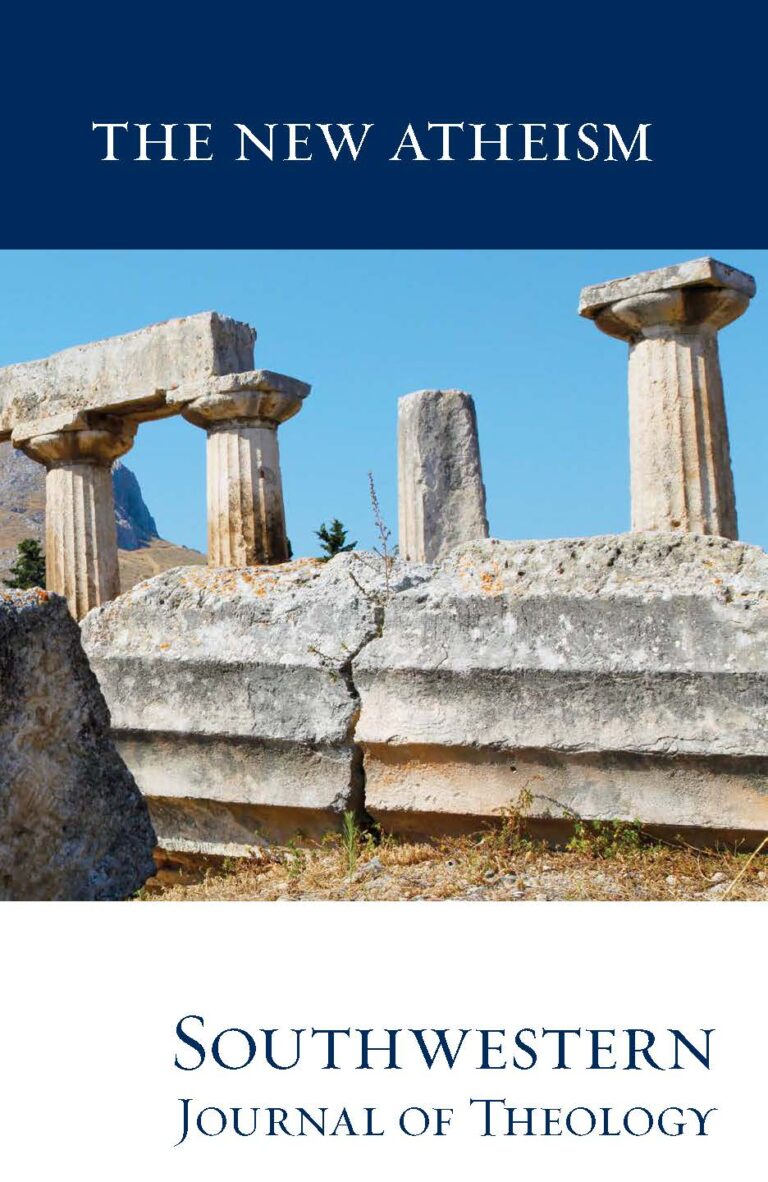
The New Atheism
Southwestern Journal of Theology
Volume 54, No. 1 – Fall 2011
Managing Editor: Malcolm B. Yarnell III
By Robert L. Hubbard Jr. The NIV Application Commentary. Grand Rapids: Zondervan, 2009. 656 pages. Hardcover, $34.99.
This commentary is part of the Old Testament Series for the NIV Application Commentary. As this commentary series is now commonplace and known to scholars, the review will focus on broad impressions of the author’s contributions.
The NIV Application Commentary is designed to “make the journey from our world back to the world of the Bible.” The main goal is not only to explain the original meaning, but also to explore the contemporary significance. The authors keep to the structure and format of the series. The passages are dealt with in broad chunks—usually a chapter or a series of chapters. Each passage is discussed in three sections: Original Meaning, Bridging Contexts, and Contemporary Significance. The commentaries published so far in the Old Testament Series are excellent and the new Joshua commentary continues this tradition. The commentary series is written for pastors and expositors. Nevertheless, in spite of their emphasis on contemporary applications and accessibility, there is a scholarly undergirding. The authors address current critical issues in biblical studies, while still maintaining the authority of the text.
Hubbard takes on the unique task of guiding the reader from the original context of Joshua to applying the principles to modern day society. This is especially challenging since the contents of the book are for a specific time period in Iron Age Palestine and a particular period in the history of the Israelites. There are many cultural and theological questions (e.g. holy war, the ban, inheritance, Israel’s right to the land, etc.) that are difficult to make a direct correspondence between text and life, an expositional goal that is primary to most evangelicals. Hubbard does an admirable job of staying true to the historical context and providing insights for using the book of Joshua as a guide to Christian living.
The commentary first discusses basic issues concerning the text of Joshua. It includes an introduction, outline, and selected bibliography. The introduction discusses the Israelite Conquest as an historical event, some theological issues such as Yahweh the warrior, holy war, and who does the promise land belong to today. While these discussions are brief, Hubbard demonstrates a depth of knowledge of the scholarly debate, particularly recent discussions of the historicity of the conquest. Most of the topics in the introduction are more fully discussed in the commentary. After the introduction, the exposition of the text follows according to the plan of the series format. At the end are four indices: Scripture, subject, author, and Hebrew words (transliterated).
One of the strengths of the commentary is the discussion of the various issues such as holy war, inheritance, and the Holy Land. Perhaps the best illustration is the application of the various inheritance and geographical data in the second part of Joshua that is usually avoided in the pulpit and personal Bible reading. Hubbard skillfully introduces the reader to the ancient context of the biblical text, which is particularly insightful coming from someone familiar with the geography and land.
Hubbard does an excellent job of addressing archaeological issues as they are pertinent to the text (i.e., the destruction of Jericho and Ai, Hazor, etc.). As with most non-specialists, there is a disjuncture in the discussion of archaeology. For example, the archaeological discussion of Jericho and Ai focus on a fifteenth century dating of the Exodus while the discussion of Hazor is based on a thirteenth century dating. Most biblical archaeologists associate the hundreds of Iron Age I settlements with the conquest and settlement. These are not highlighted in the text, nor is there a discussion of the Late Bronze Age archaeology for the fifteenth century background. However, this disjuncture does not take away from the commentary nor the exegesis and insights from the text of Joshua. Hubbard does provide an excellent overview of theories of Israelite settlement in the introductory comments. A hidden gem is his solution and discussion of the problem of the archaeology of Ai.
One of the features of this commentary series is to discuss the text in large sections, usually complete chapters or series of chapters. There are pros and cons to this approach. A pastor or student will find it difficult to turn to a particular text or pericope and glean information or background data for that particular text, making it a challenge for the expositor to prepare an exegesis of the text. On the other hand, Old Testament narrative was not written for the twenty-first century expository sermon “text bites,” and the commentary on the texts needs to discuss the narrative in its entirety.This commentary is not valuable as a “quick reference.”I highly recommend that this be read in its entirety before any sustained study or preaching from the book of Joshua. Hubbard’s command of the text and its application for today brings difficult texts that are avoided by students of Scripture to the forefront. While the reader might disagree with some contemporary applications, Hubbard does an excellent job of making Joshua—with all of its battles and long lists of geographical terms—a useful book for the church’s edification and application.





